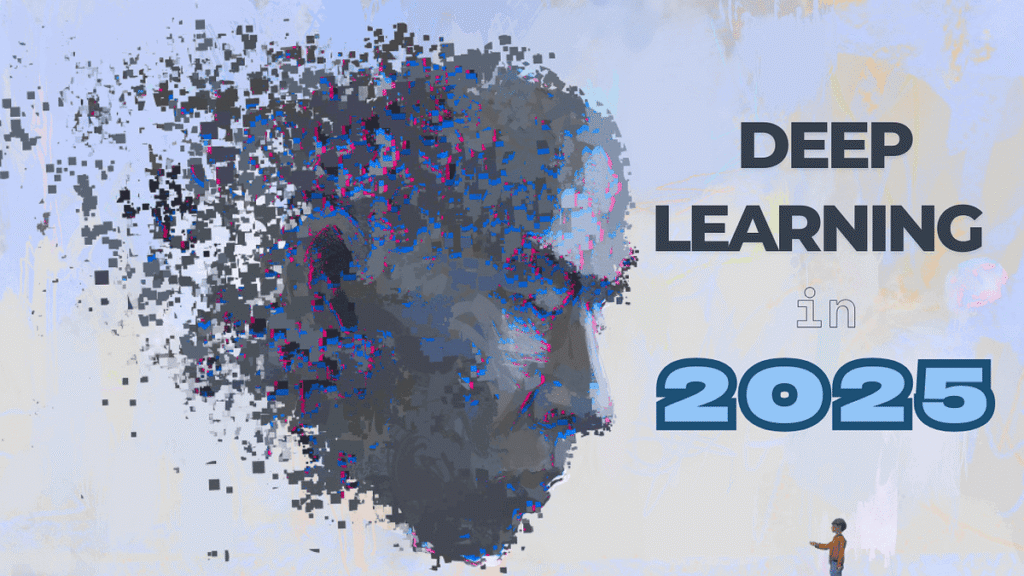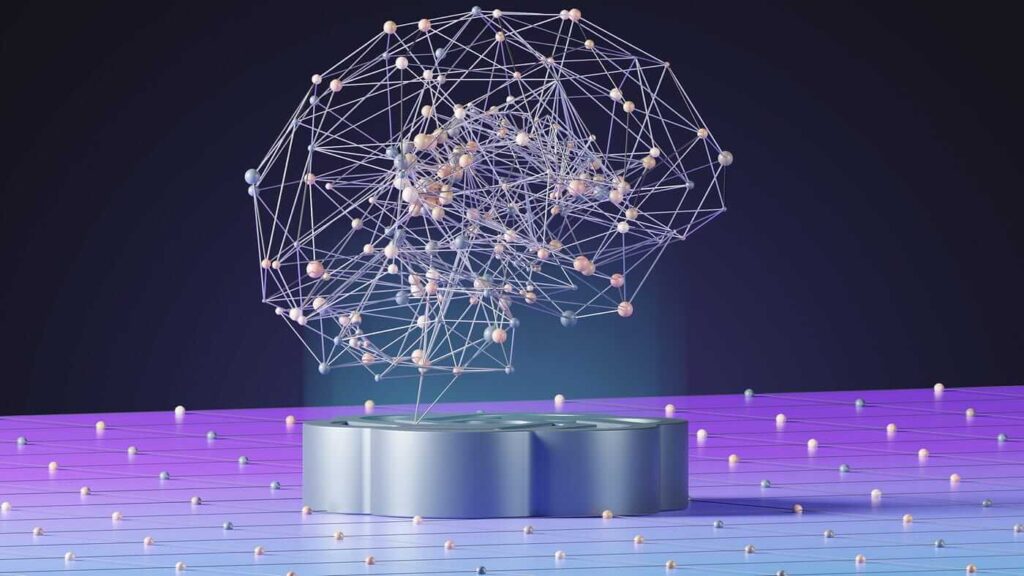Deep learning in 2025 isn’t just a buzzword—it’s a driving force behind some of the most transformative changes in modern society. This branch of artificial intelligence mimics the human brain using neural networks to process massive amounts of data and make decisions faster than ever before.
Over the past few years, deep learning has evolved from theoretical models into real-world solutions across every major industry. In 2025, it plays a vital role in solving issues that once seemed insurmountable—saving lives, protecting the planet, and connecting people like never before.
1. Healthcare Revolution: Predictive Diagnosis & Drug Discovery
In 2025, deep learning is revolutionizing healthcare. Gone are the days when disease detection relied solely on lab results and imaging interpreted by humans. Deep learning models now outperform traditional methods in early diagnosis, particularly for complex conditions like cancer and Alzheimer’s.
AI in Early Detection of Diseases
Hospitals now use convolutional neural networks (CNNs) to analyze medical imaging, detecting tumors and abnormalities with pinpoint accuracy. For instance, AI-assisted radiology systems can flag breast cancer signs 12 months before human doctors might see them.
Accelerating New Drug Development
Pharmaceutical companies use deep reinforcement learning to simulate how different compounds interact with human cells. This drastically shortens the development cycle—from years to months—by narrowing down promising candidates before clinical trials even begin.
Personalizing Treatments with Genomic Data
Deep learning also enables personalized medicine by analyzing a patient’s DNA and medical history. Tailored treatment plans based on genetic markers ensure better outcomes and fewer side effects, creating a new era of precision healthcare.
2. Tackling Climate Change: Forecasting & Resource Optimization
The climate crisis demands intelligent intervention—and in 2025, deep learning answers that call. AI systems help scientists understand changing weather patterns, optimize renewable energy use, and prevent agricultural disasters.
Climate Modeling with Deep Neural Networks
Deep learning models now process terabytes of environmental data to predict extreme weather events like hurricanes, droughts, and floods weeks in advance, allowing communities more time to prepare and respond.
Energy Grid Optimization Using AI
AI-powered grids analyze usage patterns and weather conditions to allocate solar and wind energy efficiently. This reduces fossil fuel reliance and prevents power outages during high-demand periods.
AI in Water Management and Agriculture
In farming, computer vision systems monitor crop health, detect pest outbreaks, and even manage irrigation based on real-time soil and weather data. This leads to higher yields and smarter use of natural resources.
3. Safer Roads: Autonomous Vehicles & Traffic Management
Road safety has always been a global concern. In 2025, deep learning is steering us toward a safer future—literally.
Self-Driving Cars in Urban Environments
Thanks to end-to-end neural networks trained on billions of miles of driving data, autonomous vehicles are now a daily reality in many cities. These AI systems recognize pedestrians, obey traffic laws, and react faster than human drivers.
AI-Driven Smart Traffic Systems
Urban planners use deep learning algorithms to model traffic flows and reduce congestion. Traffic lights adjust dynamically, minimizing wait times and improving fuel efficiency.
Accident Prediction and Prevention
By analyzing live camera feeds and sensor data, deep learning can predict high-risk scenarios—like a distracted pedestrian or reckless driver—and take preemptive action, preventing accidents before they happen.
4. Combating Cybersecurity Threats with Deep Learning
With data breaches growing more sophisticated, traditional firewalls just don’t cut it anymore. Deep learning now provides a proactive shield for digital systems.
Real-Time Threat Detection
Deep neural networks scan network traffic in real time, identifying suspicious patterns that signal a cyberattack. They adapt constantly, learning from new threats to stay ahead of hackers.
Anomaly and Intrusion Detection
Autoencoders and recurrent neural networks (RNNs) detect subtle anomalies in user behavior—like a sudden login from a different continent—triggering alerts or locking systems instantly.
AI in Identity Verification
Biometric security backed by AI, such as facial recognition or voice authentication, has replaced passwords. These systems are nearly impossible to spoof and ensure safe access to critical systems.
5. Breaking Language Barriers with Real-Time AI Translation
In our increasingly global world, deep learning has made universal communication possible.
Voice-to-Voice Instant Translation
Neural machine translation tools now support real-time speech-to-speech translation in over 100 languages. You can talk to someone across the world, and it feels like you’re speaking the same language.
Multilingual Customer Support
Companies use AI chatbots trained on multilingual datasets to provide instant support in any language, improving user experience and global reach.
AI in Education and Global Communication
Students and educators can now access learning materials translated into their native language, while businesses operate seamlessly across borders, thanks to reliable AI-powered communication.
Deep Learning in Finance: Fraud Detection & Risk Management
The financial sector has always been a hotbed for innovation, and in 2025, deep learning is driving unprecedented advancements in fraud prevention, credit scoring, and market forecasting.
AI in Detecting Transaction Anomalies
Banks and fintech platforms now rely on deep learning models to flag unusual transaction patterns. These systems detect fraud in real-time, analyzing user behavior across devices, transaction amounts, times, and geolocations. This rapid detection helps institutions freeze accounts and alert customers before losses occur.
Real-Time Credit Scoring
Traditional credit scoring methods are limited and often exclude those without a financial history. Deep learning expands access to credit by analyzing alternative data such as payment histories, social behavior, and online activity, providing fairer, faster credit assessments.
Market Prediction Algorithms
AI models trained on decades of financial data predict stock trends, commodity prices, and economic shifts. While not foolproof, these tools offer valuable insights for investors, helping them make smarter, data-backed decisions in volatile markets.
Transforming Education through Personalized Learning
In 2025, the classroom looks very different. Thanks to deep learning, education is now tailored to the needs of every learner—boosting engagement, understanding, and retention.
Adaptive Learning Platforms
Online learning systems powered by deep learning track student progress, strengths, and weaknesses in real-time. They adjust content delivery—slowing down for difficult topics and advancing quickly through mastered material—creating a truly personalized experience.
AI Tutors and Assistants
AI-powered virtual tutors provide 24/7 assistance, answering questions, explaining concepts, and guiding students through assignments. These tools reduce the strain on educators and make quality learning accessible to all.
Monitoring Student Engagement
Through facial recognition and behavioral analysis, deep learning detects when students are distracted or confused. This data helps educators intervene early and adjust teaching strategies to maintain interest and comprehension.
Ethical Considerations & Bias in Deep Learning
As deep learning takes on bigger roles in decision-making, ethical concerns grow louder. In 2025, stakeholders across industries are working to ensure AI remains fair, transparent, and inclusive.
Mitigating Algorithmic Bias
One of the biggest risks in deep learning is embedding human bias into machines. Teams now prioritize diverse data sets and regularly audit AI systems to identify and correct biased outcomes, especially in high-stakes areas like hiring and policing.
Ensuring Transparency and Accountability
Explainable AI (XAI) models are gaining traction, making it easier for developers, regulators, and users to understand how decisions are made. This boosts trust in systems and allows users to challenge unfair outcomes.
Global Regulation Trends in 2025
Governments worldwide are now enforcing policies around AI ethics. These regulations require transparency reports, consent protocols, and ethical reviews—ensuring AI technologies respect user rights and societal values.
The Future Outlook: What’s Next for Deep Learning
While 2025 has seen monumental progress, the journey of deep learning is just beginning.
Merging with Quantum Computing
The fusion of deep learning and quantum computing is unlocking speeds and capabilities once thought impossible. Complex simulations, real-time training, and massive-scale optimization are becoming reality.
Generalized AI Models
Instead of training separate models for each task, AI researchers are developing generalized deep learning models that can handle multiple applications—mimicking true human intelligence more closely than ever before.
Human-AI Collaboration Tools
Rather than replacing humans, deep learning is now enhancing productivity. AI co-pilots assist writers, designers, engineers, and more—offering real-time suggestions, completing repetitive tasks, and opening creative doors.
Conclusion
The breakthroughs of 2025 prove one thing—deep learning isn’t just futuristic hype. It’s a powerful force that’s solving real problems right now. From early disease detection to climate resilience, safer transportation to universal communication, these innovations are making life better for millions across the globe.
As we continue to refine, regulate, and responsibly integrate this technology, deep learning will remain one of the most transformative forces of the 21st century—building a future that’s not only smart but humane and equitable.


